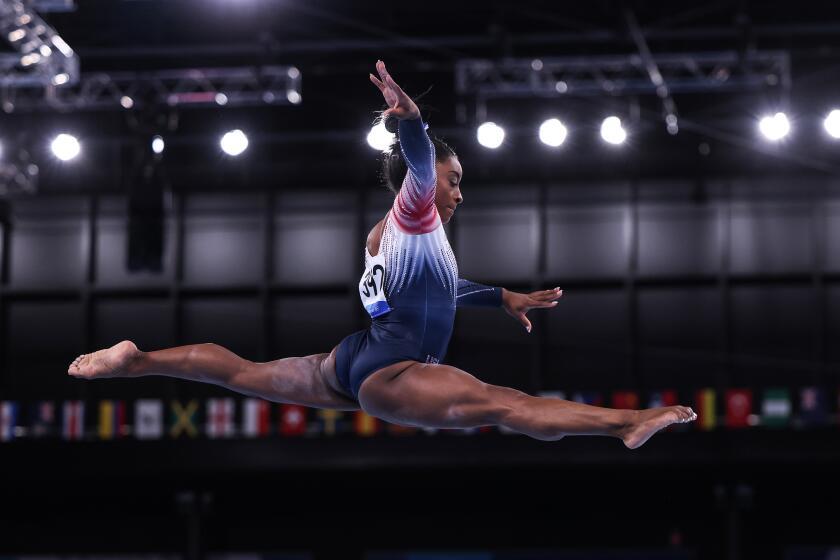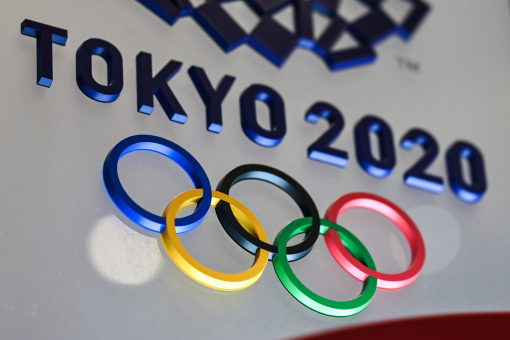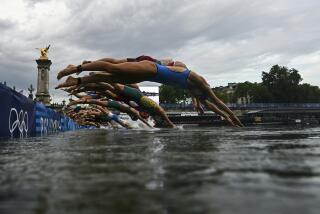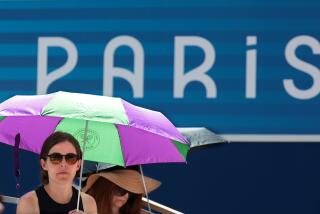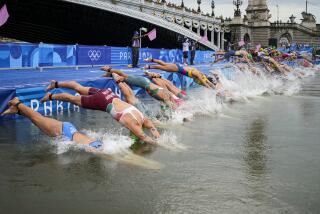Concerns over pollution and hot weather add another challenge to marathon swimming
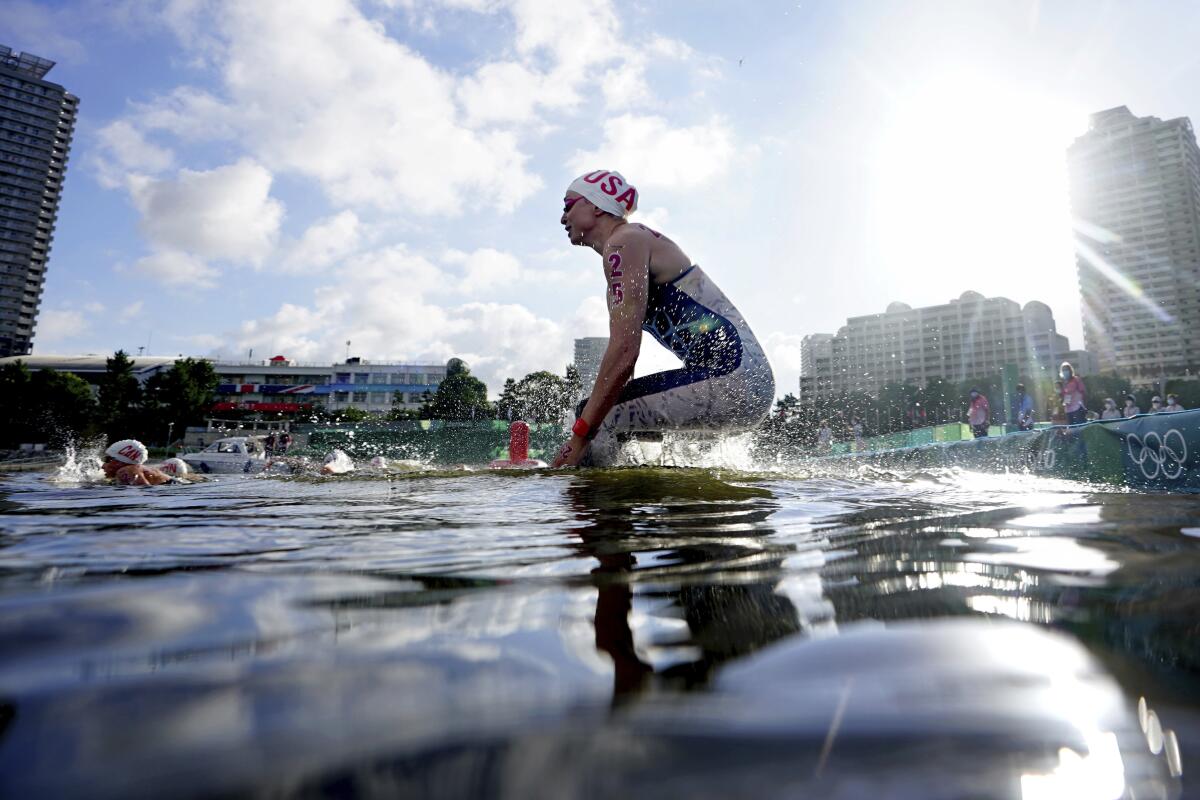
TOKYO — Murky water laps the shoreline at Odaiba Marine Park in a gentle rhythm, as traffic hums across the Rainbow Bridge in the distance, skyscrapers tower over Tokyo Bay and 48-foot-high Olympic rings float nearby in one of the trademark settings at the Summer Games.
But months of questions followed the 25 women who plunged into the water shortly after dawn Wednesday for the open-water swimming competition.
Under the best of circumstances, the 10-kilometer race is one of the most demanding tests among the 33 sports at the Olympics. For two hours, swimmers navigate seven laps around the course while fighting off competitors — the thrashing pack can become physical without lane lines — gulping occasional drinks extended to the water by long poles and, in the case of one woman, fending off a fish that smacked her in the chest.
Simone Biles, who withdrew from most events on her Olympic schedule, made a remarkable return Tuesday, winning bronze in the balance beam final.
This race, however, came after persistent controversy over high water temperatures and pollution raised safety concerns among some athletes and coaches.
“You can always prepare for what you think it’s going to be, but it’s always going to be different,” said Haley Anderson, a USC graduate who lives in Santa Monica and finished sixth. “You never know how hot you’re going to get during a race because 10K is a really long time.”
Anderson and Ashley Twichell, who placed seventh, were the first U.S. athletes to qualifying for the Games in July 2019. Though the pandemic delayed their appearance by a year, worries grew about how Tokyo’s notorious summer heat would impact the venue used for the open-water races and the swimming portion of the triathlon.
Following an open-water test event in mid-2019, one competitor told reporters the bay “smelled like a toilet.” The swimming leg of a paratriathlon the same year had to be canceled after tests found E. coli levels in the water exceeded the threshold set by World Triathlon.
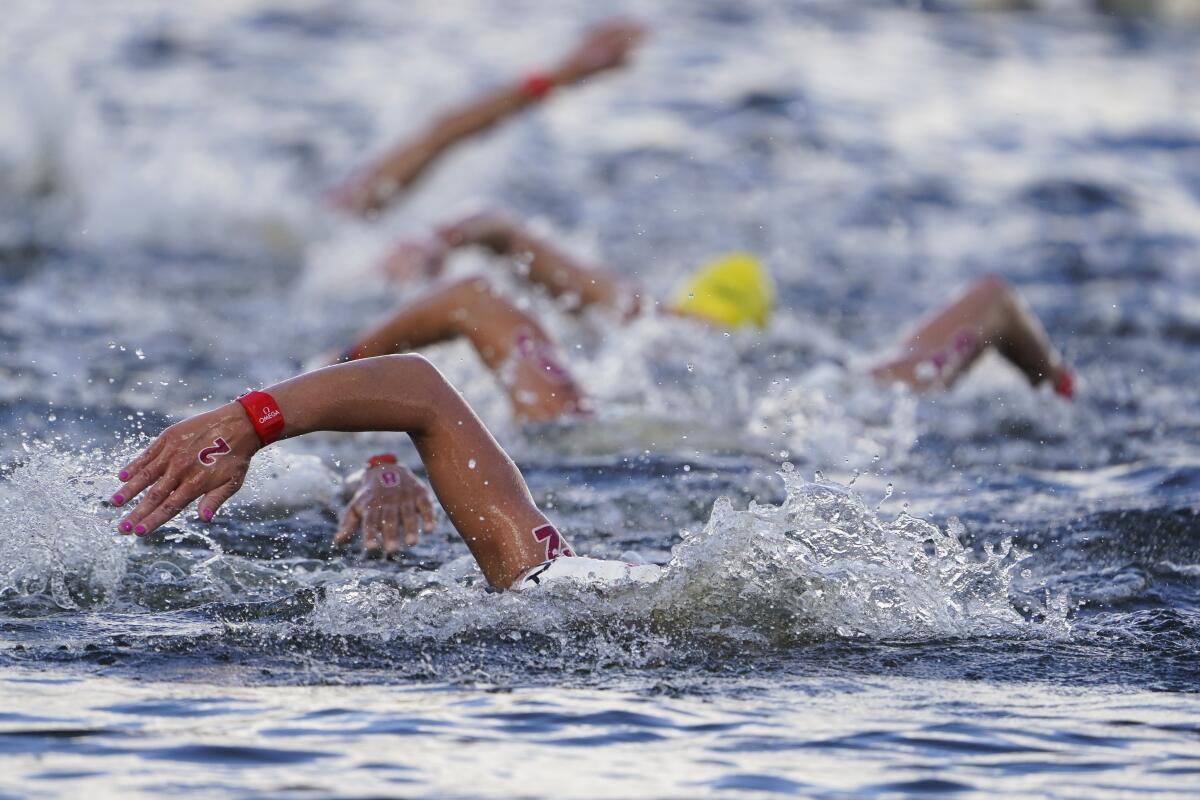
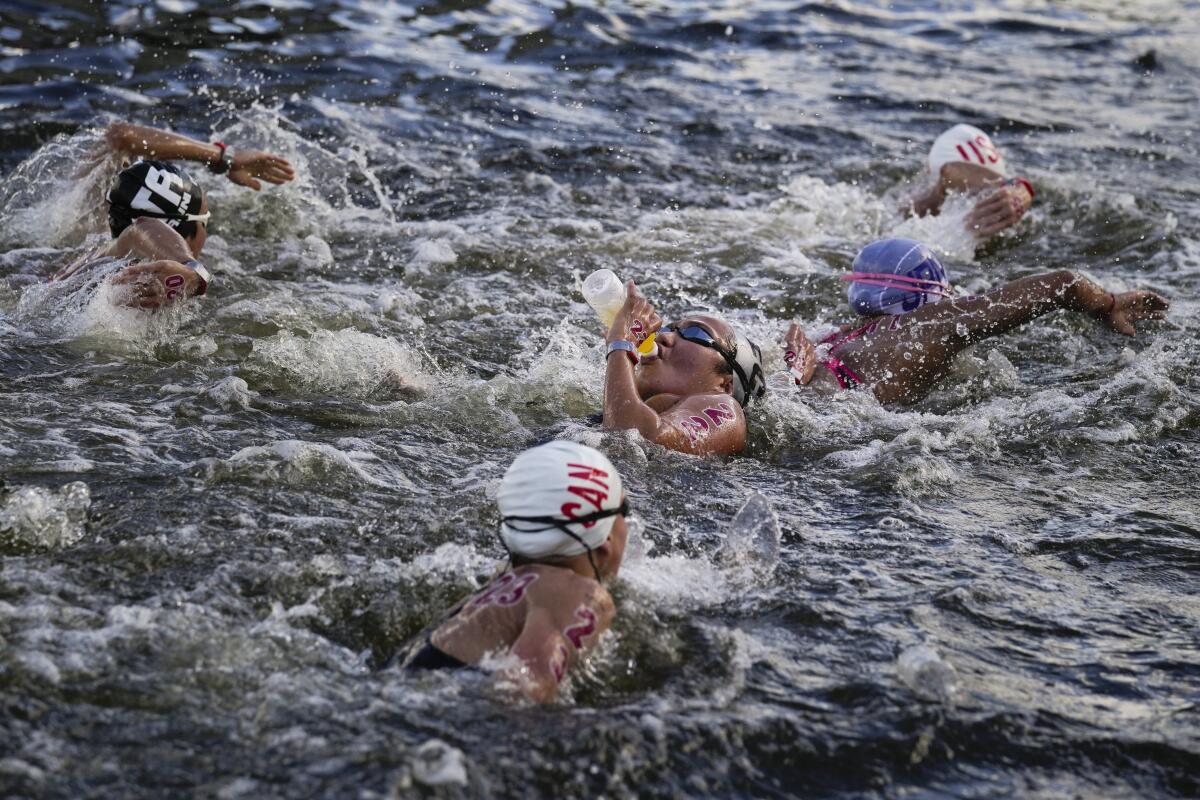
High water temperatures provided another problem. The issue loomed large for open-water swimmers in a sport in which Fran Crippen, the U.S. star who died after overheating in warm water during a race in the United Arab Emirates in 2010, still casts a long shadow.
Though the Olympic marathon and race-walking events were moved to Sapporo to avoid the Tokyo heat, the open-water and triathlon events remained in place.
During a Reddit question-and-answer session in early 2020, Anderson wrote that the water temperature was “very unsafe” and “There is also no plan B venue, which in my opinion should be non negotiable.”
Organizers installed triple-layered polyester mesh screens to filter bacteria around the competition area that’s essentially walled off from the rest of the bay, along with water circulators to pull up cool water from the depths in an attempt to lower the temperature. They also moved the start time to 6:30 a.m.
But the water temperature for the men’s triathlon was 86 degrees earlier in the Games — USA Swimming doesn’t allow long-distance races when the water temperature exceeds 85 degrees. FINA, the worldwide governing body for aquatics, has a looser standard of 88 degrees for open-race competitions.
On Wednesday morning, water temperature at three points in the course ranged from 84.6 degrees to 84.9 degrees. The air was sweltering, even at the early hour, with an 82-degree temperature that felt like 91 degrees. One of the men’s open-water swimmers — their race is Thursday — tweeted this week that the bay felt like a “warm puddle.”
Anderson, who won a silver medal at the London Games in 2012 and is competing in her third Olympics, trained in a warm pool to help acclimate to the heat and wore a cooling vest over her swimsuit before the race.
“The water was pretty warm,” she said. “Luckily we had some clouds.”
Twichell led in the early laps but fell off the pace as a small armada of motorboats, personal watercrafts and kayaks followed the swimmers around each lap. Brazil’s Ana Marcela Cunha pulled away to claim the gold medal in 1 hour, 59 minutes, 30.8 seconds.
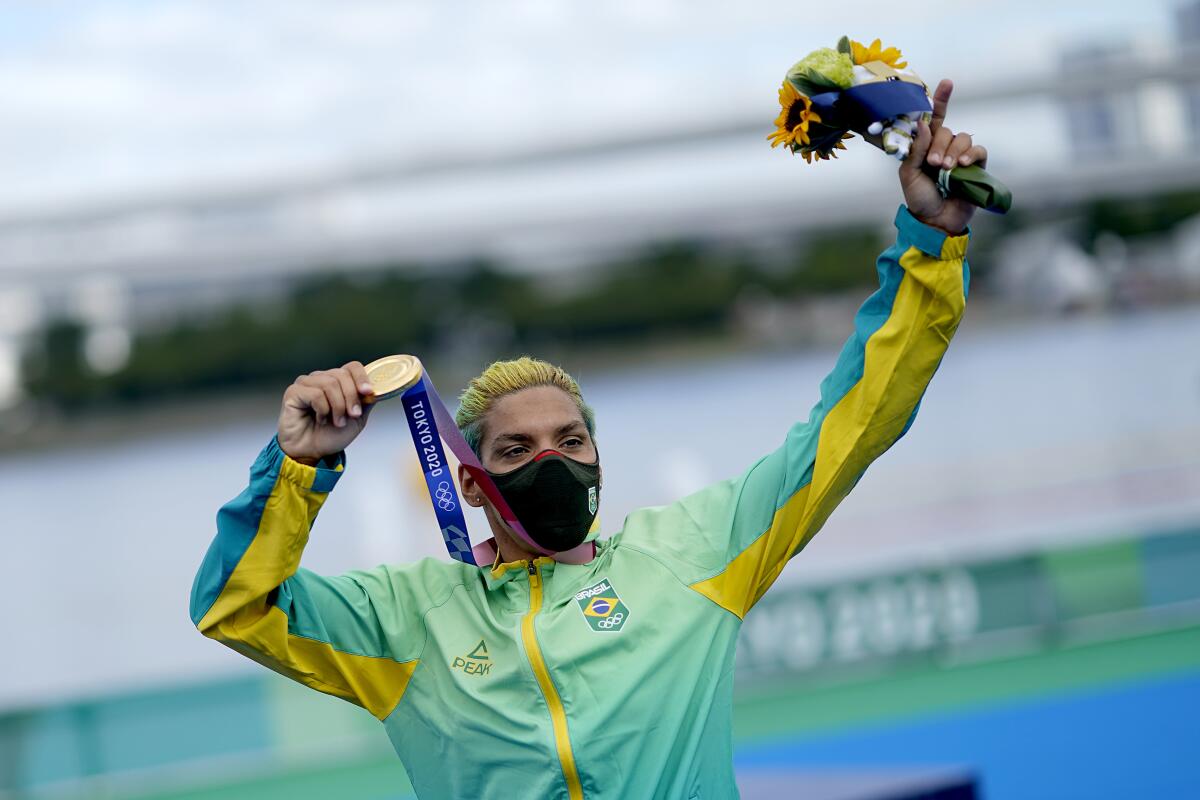
All 25 competitors finished, though by the time they left the water, the air temperature felt like 99 degrees.
“It was tough conditions at the end,” said Sharon Van Rouwendaal of the Netherlands, who took silver. “It got warmer and warmer as we went faster and faster.”
As competitors filtered away from the bay after the race in search of rest and shade, the water lapped the shore, the sun felt relentless and the temperature rose.
More to Read
Go beyond the scoreboard
Get the latest on L.A.'s teams in the daily Sports Report newsletter.
You may occasionally receive promotional content from the Los Angeles Times.
